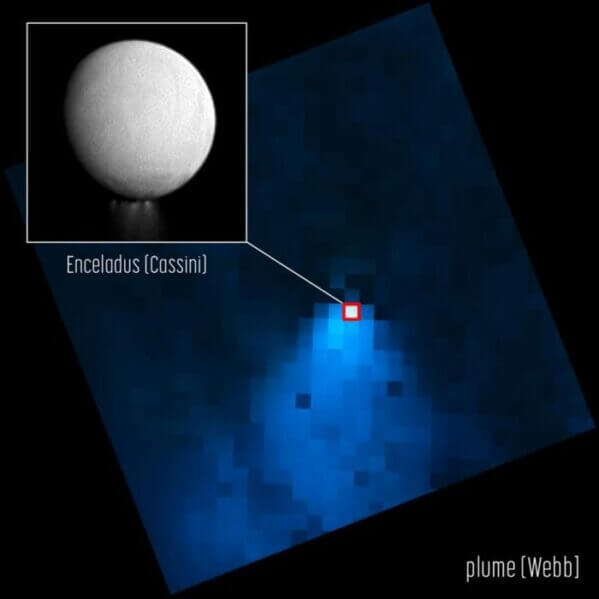Two scientists from the Southwest Research Institute were part of a team using the James Webb Space Telescope (JWST) that spotted a massive geyser of water vapor, over 6,000 miles long, coming from Saturn’s moon, Enceladus. This is about the same distance as between the U.S. and Japan. Following this discovery, Dr. Christopher Glein from the institute was given more resources to study this geyser and important chemicals on the moon’s surface, to better understand if this moon could support life.
During its 13-year mission studying Saturn, the Cassini spacecraft found out that Enceladus has an underground ocean of liquid water. Cassini studied samples from geysers of ice and water vapor that were shooting out into space from cracks in the moon’s icy surface.
“Enceladus is one of the most active objects in the solar system and is a key focus in our search for life beyond Earth,” said Glein, a leading expert in studying oceans on other planets. He is a co-author of a paper recently accepted by Nature Astronomy. “Since NASA’s Cassini spacecraft first studied Enceladus, we continue to be amazed by what we discover on this incredible moon.”
The latest observations made with Webb’s Near InfraRed Spectrograph have given us amazing results.
“When I was looking at the data, at first, I thought I must be mistaken, it was just so surprising to see a geyser more than 20 times the diameter of the moon,” said Geronimo Villanueva of NASA’s Goddard Space Flight Center and lead author of the recent paper. “The geyser extends much further than we could have imagined.”
Webb’s sensitivity tells us a new story about Enceladus and how it contributes to the water supply for Saturn and its rings. As Enceladus orbits around Saturn in just 33 hours, the moon shoots out water, leaving a ring, almost like a donut, behind it. The geyser is not only huge, but the water spreads across Saturn’s dense E-ring. JWST data show that about 30 percent of the water stays in the moon’s path, while the other 70 percent goes on to supply the rest of Saturn’s system.
“The Webb observations, for the first time, are visually showing how the moon’s water vapor geysers are contributing to the formation of the ring,” said Dr. Silvia Protopapa from the Southwest Research Institute, an expert in studying the composition of icy bodies in the solar system who was also on the team. “This is a fantastic testament to Webb’s extraordinary abilities. I’m excited to be part of the next team as we start our search for new signs of potential life and geyser activity on Enceladus.”
Inspired by the amazing findings from Webb’s first quick look at Enceladus, Glein is leading the same team that will study Enceladus again with JWST in the next year.
“We will look for specific signs of potential life, such as organic signatures and hydrogen peroxide,” Glein said. “Hydrogen peroxide is particularly interesting because it can provide much more powerful sources of energy for life than what we previously identified. Cassini didn’t give us a clear answer on the availability of such strong oxidants on Enceladus.”
The new observations will provide the best remote chance to search for signs of life on the surface, by improving the signal-to-noise ratio by up to ten times compared with the first study. Understanding how the geyser activity changes over time is also important to plan for future missions that target the geyser.
“Webb can serve as a bridge between Cassini and the proposed search-for-life
mission, Orbilander,” Glein said. “After the next study, we will have a better idea if ocean samples are spread out over Enceladus’s surface, not just near the south pole. These next observations could help us figure out if Orbilander can access ocean samples near the equator, which may help us get back to Enceladus sooner.”
The James Webb Space Telescope is the world’s leading space science observatory. Webb will solve mysteries in our solar system, look beyond to distant worlds around other stars and probe the mysterious structures and origins of our universe and our place in it. Webb is an international program led by NASA with its partners, ESA (European Space Agency) and CSA (Canadian Space Agency). The team’s results were accepted for publication on May 17, 2023, in Nature Astronomy, and a pre-print pdf is available at the provided link.


